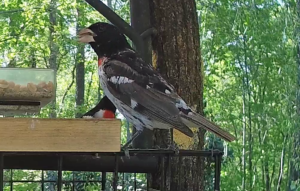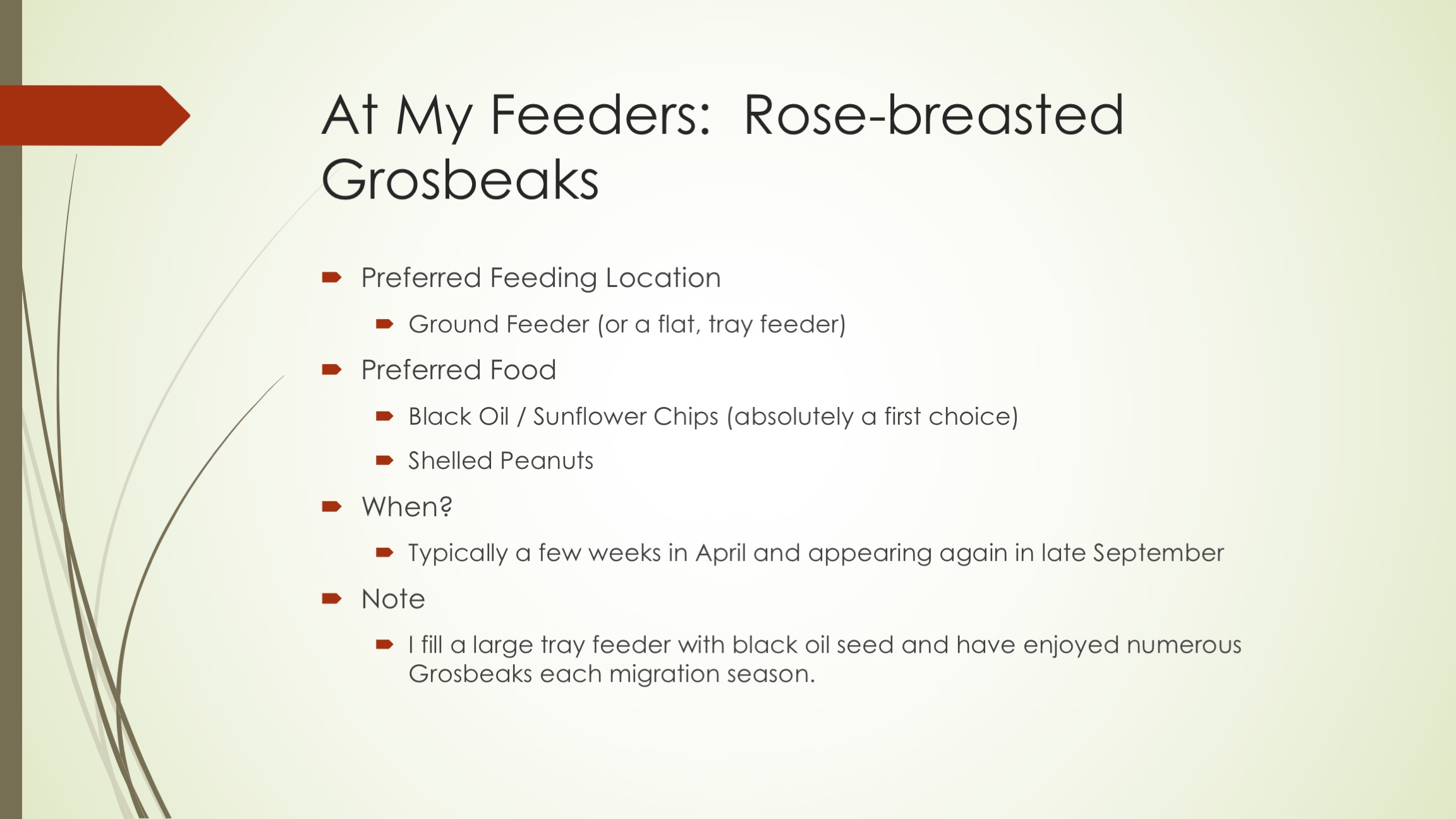At My Feeders: Rose-breasted Grosbeak
The Rose-breasted Grosbeaks migrate through Georgia in the spring (heading north) and again in the fall (heading south). They typically show up here (Emerson, GA) in mid-April and late-September. They will hang around for two to three weeks before continuing on their way.
As is true in most birds, the male is brightly colored and the female is relatively plain-colored. The male is easily identified by the color density of his black and white feathering … and the patch of bright, red feathers on his chest. When trying to identify a female Rose-breasted, look for the distinct white eyebrow and the thick beak characteristic of all Grosbeaks. In fact, Grosbeak comes from the French zoologist who originally described them in 1760. In French gros-bec = gross (large) beak.
Grosbeaks are members of the same family as the more familiar Northern Cardinal. Not surprisingly, they share the same large beak structure and attraction to black oil seed (which is easily cracked open by these “crushing beaks”). I often see the Grosbeaks feeding along side our Cardinals — so pay attention to the Cardinals in mid-April and late-September. You might find a Grosbeak hanging out with them.
The first photo shows an adult male and female Rose-breasted Grosbeak at the feeder. The second photo shows a juvenile male. Note how the young male is transforming from his drab birth colors to his adult coloration. He makes it pretty clear he is a cross between his male and female parents!


